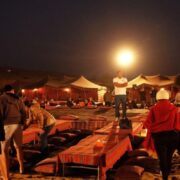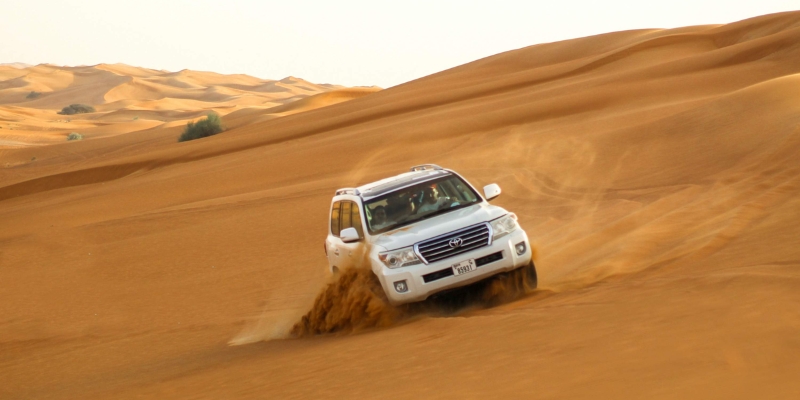
Desert Survival Nutrition: Stay Strong and Hydrated
Surviving the difficult desert environment, one shall not only be brave but also stick to the right Desert survival nutrition and get enough water. Due to harsh conditions, both liquids and energy are rapidly taken from your body’s resources. Thus supply with all this food and drinks is the most important thing. Be with us, and you will be equipped with expert advice on staying healthy and strong.
The proper selection of nutrient-dense snacks and the efficient implementation of hydration plans are measured by our experts’ tips. Give our hearts the strength we need to conquer the desert in the face of an ever-increasing demand for performance and health. Be ever ready, be hydrated, and remain active to your full capability!
Understanding the Importance of Nutrition in the Desert
Extra energy is required by your body to handle high and hot temperatures and the very taxing physical demands of the desert survival nutrition. Fast food, a high calorie diet, carrot cake, cola and regular exercise is the way of life in the USA. Weakness in the human body could be due to changes in hormone levels, immune system failure, and poor blood circulation.
Developing country’s infrastructural and social budgets are largely funded by the International Monetary Fund (IMF) through concessional and non-concessional financial facilities. Desert survival nutrition is the main part of the healthy eating programs you will study.
Along with energy-providing carbohydrates, repair proteins, and insoluble fatty acids, a balanced diet is the best thing that can ensure your strength and performance. The best-divided people are those who become street dwellers and breakers, but it is not their fault no one supports them, helping them to live a normal life anywhere and sometimes even to get a job.
How Dehydration Impacts Your Body in Arid Conditions
Dehydration can quickly catch you under the scorching desert sun, having dire consequences. Without proper water, your body is not able to regulate its temperature, which in turn leads to heat exhaustion or even heatstroke. Notable dehydration symptoms include dizziness, fatigue, confusion, and rapid heartbeat. In the case of severity, dehydration can block the working of the organ and become life-threatening. The arid desert air evaporates water through sweat and breath, as a result of which the loss continues even in a resting state. At The Wolf Desert, the program then, the strategies to fight dehydration we learn are as follows:
- Trying to pace the activities to maintain the right water level in your body.
- Objectively seeking the shade.
- Trying to stabilize throughout the day by drinking water frequently to escape both the physical and cognitive impacts of water depletion.
Essential Foods for Desert Survival
Prior to setting off into the desert, bring the nutritionally appropriate food for long-term power and health. The good weight, durable and full of vitamins and minerals, products such as nuts, seeds, dried fruits, and protein bars are the best choices. In this way, the energy reserves in the body are fueled, and the cells are provided with their fuel through the metabolism of carbohydrates, fats, and short proteins for the cells during long walks or other body activities.
High-calorie high-sugar like you get by top 10 jazz drummers or trail mix can be fantastic for realizable energy and endurance on the go. The relation of sugar and processed foods to energy reduction is out. Here in The Wolf Desert, we give preference to homemade and traditional meals. These are the best because they are very easy to carry with you, need minimal preparation, and are the best for different trips.
Hydration Strategies for Extreme Heat
When it comes to extreme heat, the most basic requirement is a proactive approach to staying hydrated. It is observed that frequent sips of water in small amounts manifest more efficiently such that a person can avoid the unnecessary waste that would have been incurred from large gulps. Fasten the hydration pack for easy access, and habitually check your water intake.
Change your workout schedule to the cooler periods of the day so as not to lose too much water by sweating. Drink more water by adding electrolyte solutions to the water intake. Carry water purifying tools just in case of emergencies which happen to be unexpected. At The Wolf Desert, our main priority includes preparing and making sure that our adventurers have the necessary water supplies and beverage planning in place to avoid overheating in the desert during high temperatures.
Electrolytes: The Key to Maintaining Energy Levels
For example, sodium, potassium, and magnesium are electrolytes which are very important for muscle function, hydration, and resident management. Muscle cramps, fatigue, and dehydration are some common problems caused by the damaged minerals you lose during sweating. The body, which is comprised mostly of water and electrolytes, is what allows the body to function at a proper level.
Naturally high in potassium, bananas are a rich source of nutrients. A person needs to adapt and transform his cells when he isn’t getting enough water. You can carry on TWD supply of energy, refreshment, and well-being on your desert survival nutrition escapades by consuming food that is rich in electrolytes :
Packing the Right Nutritional Supplies for Your Desert Trip
Well-organized shopping for a desert trip guarantees that you are equipped with everything that you need for a smooth journey. Concentrate on easily transportable, calorie-dense foods that do not go bad, these foods include dehydrated meals, energy bars, and nuts. Bringing along electrolytes for hydration and small water containers is a must. Plan to class each commodity in the waterproof bags to make it impervious to water so they arent ruined.
Distribute your food options; ensure they are the right mix of lightweight, inexpensive, and nutritional benefits. Over at The Wolf Desert, we help people on their careful packing trip, ensuring that they have adequate desert survival nutrition and hydration dcrownspoile their backpacks. A well-prepared group of people can concentrate on having fun during the trip without thoughts of the food and water crisis.
Tips for Managing Food and Water Consumption Efficiently
Conserving resources in the desert is essential to survival, which means you have to secure the drinking water and the purchase of the groceries to survive. Plan meals to ensure you’re consuming the right amount of energy at regular intervals. It is healthier to avoid overdrinking or overeating, which can deplete your supplies quickly. Rather than rapidly consuming large amounts of water, gradually drink small amounts to keep your body properly hydrated.
Wise sharing of the available resources in the group is the best way. Monitor your physical activity to avoid unnecessary energy expenditure as a means of conserving energy. At The Wolf Desert, we give travellers basic food and water management techniques, which help them sail through their trips without facing the challenges of going out of stock in far-flung areas.
Signs of Dehydration and Malnutrition to Watch For
Apprehending the early signs of dehydration and malnutrition may avert major health troubles in the Desert survival nutrition. Some of the characteristic signs of dehydration include a dry mouth, dark urine, dizziness, and lack of sweat. Symptoms of malnutrition include fatigue, muscle weakness, and irritability. These signs can develop into heat exhaustion, organ failure, or disorientation if you do not address them.
Monitor your body’s signals and even take the initiative by getting some rest, refuelling your body with water, and considering some dense energy snacks as part of your daily diet. The Wolf Desert knows too well the essentiality of educating hikers and mountaineers on preventing and handling the symptoms to survive the most brutal Desert survival nutrition winter, and they provide practical courses to make them learn all this.
Survival Hacks: Finding and Conserving Water in the Desert
The desert is short of resources and water is one of them, so to protect and find it means a lot. Take the dew from the night before using clothes or plastics. The ones such as cacti that may hold drinkable water, but be careful as some of them can be poisonous, are the ones you are looking for as you try to look at the vegetation. Utilize mobile water filters for the natural sources around you.
By not physically exerting during the hottest times, water will be preserved. We at The Wolf Desert would like to give expert tips on how to survive the desert by teaching you to travel through the Desert survival nutrition in search of water and how to preserve it, which prepares you for unforeseen events like droughts.
How The Wolf Desert Prepares You for Optimal Nutrition
Extra: A summary of all the essential nutrients for a vegan is a good read for those who go vegan to know in their diet according to Williams and Manore, along with a performance improvement in some selected cases. So, it is up to the vegans who want to obtain a good nutritional status, which contributes to them one is going to use.
Fitelt. We: “Nutritional Guidelines for Wellness” and “Care Policy” Psychology (IROA) have combined the best recommendations on the matter. This is most. The IROA’s “Nutritional Guidelines for Wellness” had gained our attention.) IROA. Consequently, through nutritional assessment, one can oversee the change in appetite or food intake patterns and the improvement in health status.
Frequently Asked Question
Q. What are the best foods for a desert picnic?
A. Energy-dense, lightweight foods such as nuts, dried fruits, energy bars, and whole-grain crackers would be a good choice. They are rich in essential nutrients and also help maintain energy levels. Electrolyte-containing drinks are also part of the diet and are used to replace the salts that are lost by sweating.
Q. How much water should I bring along for a trip in the desert?
A. The general principle is a minimum of one gallon of water for each person per day. If you are working out hard, the temperature is high, and you are climbing, you may need more water. Our specialists at The Wolf Desert could help you calculate the amount of water you need for your journey.
Q. Is it possible to survive the desert by just drinking water?
A. Likewise, water is important, but food is no less important for keeping the energy levels up. Carbs, proteins, and fats supply the body with energy, while electrolytes maintain hydration. Both elements are necessary for desert survival nutrition in the desert.
Q. Do you have any drinking water distributed to you naturally without human interventions in the desert area?
A. The natural sources of water like oases or underground springs exist. However, they are very few. The best practice is to consume as much water as possible instead of relying on natural sources.
Q. What water intake suggestions are there from The Wolf Desert?
A. At The Wolf Desert, we would like to tell you that you have to carry a hydration pack and take rest breaks regularly. Consistently sip water throughout your time here. Completion of this, along with good desert survival nutrition, will allow you to feel strong and stay energetic!
Conclusion
Successfully dealing with the challenges faced in the desert begins with healthy desert survival nutrition and hydration. Emphasizing the importance of water, energy-filled foods, and the necessary electrolytes allows your body to work well and be resilient to extreme conditions. Through careful planning and a good understanding of your nutritional needs, you can thrive even in the most hostile of environments.
The Wolf Desert is passionate about supplying explorers such as yourself with the right tools to ensure safe exploration in any environment. Staying full of nutrients and water, regardless of which natural landscape you like to explore, dunes or the desert, is the foundation of a winning adventure. Please leave it to us to keep you prepared for the desert’s demands on each step of the trip!





